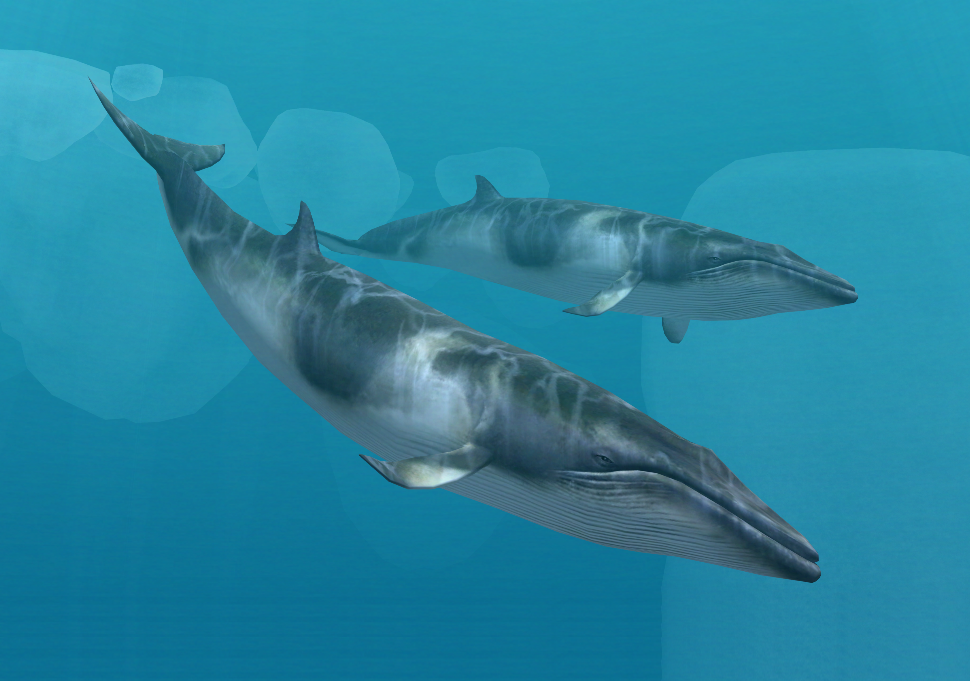


#MINKE WHALE PATCH#
Dwarf minke whales can also be distinguished from other minke whales by a bright white patch on the upper part of their dark pectoral fin that extends up towards the shoulder and back area. Their baleen plates have a thin black border. They have 230 to 360 short, white/cream colored baleen plates on each side of their mouth and 50 to 70 abdominal pleats are located along their throat.ĭwarf minke whales are significantly smaller in size, growing up to lengths of about 26 feet and weighing up to 14,000 pounds. Northern Hemisphere minke whales are distinguished from other rorquals by their relatively small size and a well-defined white band located in the middle of their dark flippers. Calves are usually darker in coloration than adults.Ĭommon minke whales vary in body size, patterns, coloration, and baleen (long, flat keratin plates that hang from the whale’s mouth in place of teeth) based on geographical location. Their body is black to dark grayish/brownish, with a pale chevron on the back behind the head and above the flippers, as well as a white underside. Minke whales have a fairly tall, sickle-shaped dorsal fin located about two-thirds down their back. Females may be slightly larger than males. These rorquals have a relatively small, dark, sleek body that can reach lengths of up to about 35 feet and weigh up to 20,000 pounds. The common minke whale is the smallest baleen whale in North American waters. minke whale stocks include population estimates for each minke whale stock in U.S. The latest stock assessment reports for U.S. Recently, the estimated population of minke whales has come into question, and it is possible that some stocks have been depleted because of modern whaling and hunting. Only a very small number of eastern North Pacific animals were taken for subsistence by Alaska Natives. O-stock (Pacific waters and Sea of Okhotsk).J-stock (East China Sea, Sea of Japan, and Yellow Sea).The International Whaling Commission recognizes two stocks in the North Pacific that are of concern: There are two other subspecies in the Northern Hemisphere: the North Pacific ( Balaenoptera acutorostrata scammoni) and the North Atlantic ( Balaenoptera acutorostrata acutorostrata). The dwarf minke occurs in tropical, temperate, and polar waters of the South Atlantic, South Pacific, and Indian Ocean and is currently considered an unnamed subspecies of the common minke whale. The taxonomy, or classification, of the common minke whale is complex. We use a variety of innovative techniques to study and protect this species. NOAA Fisheries and its partners are dedicated to conserving minke whales. Minke whales in the United States are not endangered or threatened, but they are protected under the Marine Mammal Protection Act. They received their common name from a Norwegian novice whaling spotter named Meincke, who supposedly mistook a minke whale for a blue whale. The scientific names for minke whales translate to: "winged whale," ( Balaenoptera ) "sharp snout" ( acutorostrata ). Commercial whaling’s overexploitation of other larger whale species, however, may have allowed minke whales to prosper from the lessened competition and increased availability of food resources. They are one of the most abundant rorqual in the world, and their population status is considered stable throughout almost their entire range (especially when compared to other species of large whales).Ĭommercial whaling practices may have reduced minke whale populations in the western North Pacific and in the northeastern North Atlantic. Minke whales are members of the baleen or “great” whale family and are the smallest of the rorquals.


 0 kommentar(er)
0 kommentar(er)
